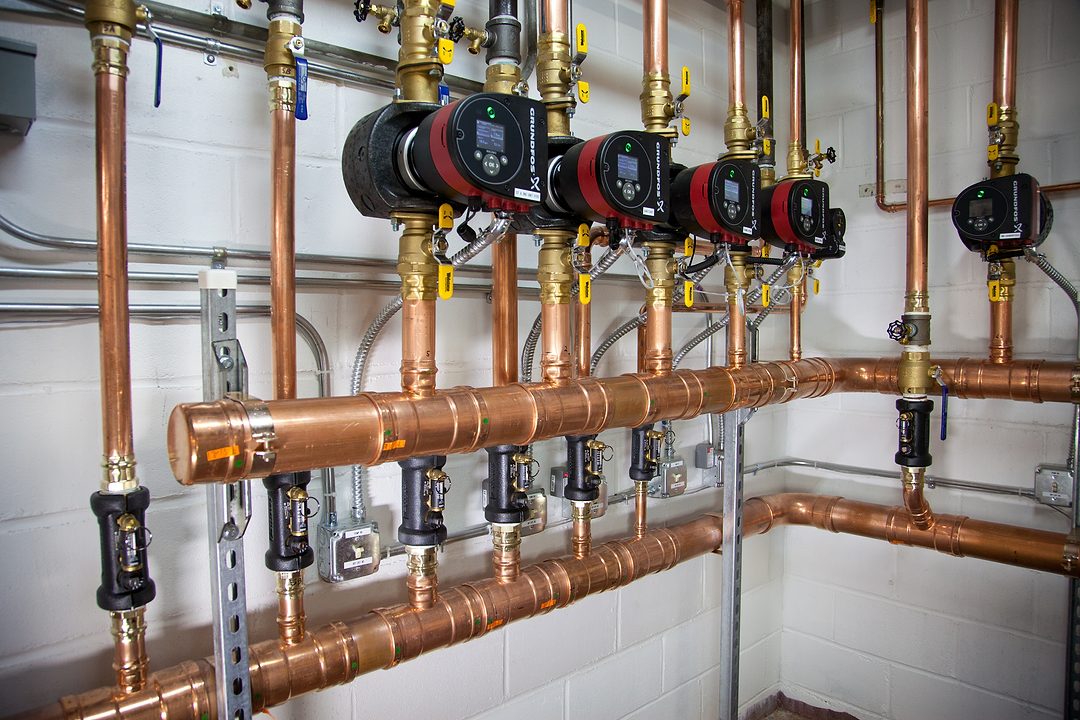The Great Hydronics Debate
If you want to see the passion of plumbing and heating contractors, ask them if they zone hydronic systems with circulators or zone valves.

In the world of residential and light commercial hydronics, one pot-stirring question stands above the others. You might be thinking about that fiery discussion you had with a coworker on the orientation of expansion tanks. Sorry, but that’s not it. You may be certain it’s about high-efficiency vs. cast iron boilers in baseboard applications. That’s not it, either.
If you want to see the passion of plumbing and heating contractors, ask them if they zone hydronic systems with circulators or zone valves! The idea of controlling flow the wrong way really gets their blood pumping. Now, the definition of right and wrong depends on who you talk to, but I hope that by the time you reach the end of this column, this seemingly black-and-white topic may turn a little grey for you.
When it comes to zoning with circulators, the No. 1 reason I hear in favor of it is that it provides redundancy. The idea of one circulator going out means you’re not getting heat in that zone, but the other zones are left unscathed. I wouldn’t mind this idea so much if it weren’t at least 37 other parts in your hydronic system that could fail, leaving the whole building without heat.
Besides, circulators are pretty darn reliable these days. If they were failing as often as people lead me to believe, contractors would certainly be more upset about that than someone using zone valves.
For those who prefer zone valves, the biggest point in their favor is energy consumption. Many (not all) zone valves on the market are drawing 7 watts or less, while even the most efficient circulators are still typically drawing a minimum of 10 watts at their lowest speed. This comparison is often made with typical zone valves and PSC motor circulators or the rated max watts of a circulator, making a much more compelling (yet misleading) argument.
In either comparison, zone valves are using less electricity; that’s something to consider based on what’s going on in the world these days with fuel and energy.
Many also sing the praises of zone valves because they’re significantly less expensive. This is certainly true in most cases, especially considering the added costs of wiring and isolation flanges accompanying circulators. Repair costs also need to be considered in this conversation. Replacement circulators or cartridges are typically much more costly than a replacement zone valve actuator.
The exception to the rule is certain areas of the country that offer rebates based on energy efficiency. It’s possible in these cases that after a rebate, a circulator is less expensive than a zone valve. This is what leads to walls covered in circulators — and, in my opinion, goes against the underlying intentions of the energy-efficiency rebates that they’re taking advantage of.
This scenario reminds me of LED lighting and its potential to dramatically reduce power consumption for homes, buildings and municipalities. Without a doubt, it’s a great way to save energy, but it’s also encouraged everyone, everywhere, to add more lights just because they can. It not only chews into much of the energy savings that LED lights offer, but also leads to significant increases in light pollution.
Consider what’s best for the application
By now, you probably think I’m very anti-circulator when it comes to zoning, and it’s pretty likely I work for a company that makes zone valves. While you’re correct about my employment, I wouldn’t say that I’m against zoning with circulators. I’m more about doing what makes sense for the application and the customer.
How many times have you seen a mechanical room full of circulators and found one (usually, it’s more) of them controlling a small bathroom radiant floor zone or 8 feet of baseboard in a mud room? Couple it with the fact that it’s usually fed by a circulator capable of 15 feet of head, and you’re seeing ridiculously high flow rates in a loop that needs less than 1 gallon per minute.
Even worse is when all those circulators come off a single 1-inch header. Maybe it’s their way of adding head loss and keeping the flow rates down.
If you’re thinking more about zone valves, consider the need for balancing. If you have one circulator feeding three zones and all are open, your flow will take the path of least resistance. When not balanced, this will lead to the shortest, closest circuit being satisfied quickly and closing off, allowing the other zones to get flow.
In most cases, this is good enough, but if your number of zones increases or you’re getting a bit aggressive with the outdoor reset curve leading to long run times, you may end up with a callback.
At the very least, balancing could mean dialing in a temperature drop across the zone with a globe valve during steady-state operation. You’re in luck with a manifold typically used for radiant, as many manifolds include flow meters built right in. You could also dial in each zone’s flow rate with a dedicated balancing valve. This last option may sound intimidating, but some awesome options for easy-to-use balancing valves are on the market these days.
Ultimately, I am a fan of zoning with circulators on zones warranting their own circulator. That 8 feet of baseboard is not of them, but definitely on a fan coil dishing out 60,000 BTU. If the circulator fits based on the head loss and flow requirements of that single circuit, knock yourself out! However, you need to consider that several zones, each needing a small wet rotor circulator, could be piped up with one larger circulator and zone valves.
So, when you’re designing your next job, make sure to think it over. Understanding the costs and benefits of doing it one way or the other is why you’re the professional. Irrational bias (“I’ve always done it this way!”) shouldn’t have any part in why you’re choosing one or the other.
If the debate ever comes up again as to whether zone valves or circulators are better, remember: it depends. l
Cody Mack has nearly 20 years’ experience as an installation contractor, service technician, application engineer and, most recently, as training manager for Caleffi North America. He’s a family man, gear-head, and motorcycle enthusiast with a common-sense approach to hydronics. Cody can be reached at cody.mack@caleffi.com.





